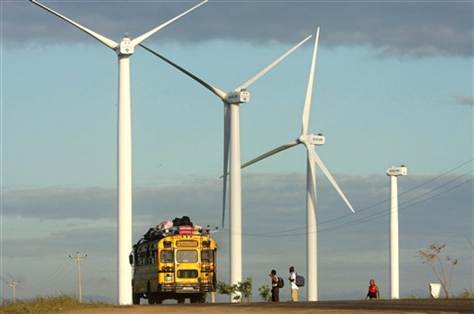Nicaragua, a Central American nation known for its stunning landscapes and rich cultural heritage, is also home to an abundant natural resource that has the potential to transform the country’s energy sector: wind. With an average wind speed of 9 meters per second, Nicaragua’s wind energy potential is immense, and the country has been making significant strides in harnessing this renewable power source. As the world grapples with the pressing need to transition to cleaner, more sustainable energy sources, Nicaragua’s burgeoning wind energy sector offers a promising example of a sustainable future for the country.
The development of wind energy in Nicaragua has been driven by a combination of factors, including the country’s favorable wind conditions, a growing demand for electricity, and a national commitment to reduce dependence on fossil fuels. In recent years, the Nicaraguan government has set ambitious targets for renewable energy production, aiming to generate 90% of the country’s electricity from renewable sources by 2020. This commitment has been backed by significant investments in renewable energy infrastructure, particularly in the wind energy sector.
One of the most notable examples of Nicaragua’s investment in wind energy is the Amayo Wind Farm, located in the southern region of Rivas. The farm, which began operations in 2009, consists of 19 wind turbines with a total installed capacity of 40 megawatts (MW). Since its inception, the Amayo Wind Farm has played a crucial role in reducing Nicaragua’s reliance on imported oil for electricity generation, saving the country millions of dollars in energy costs and reducing greenhouse gas emissions.
Another significant wind energy project in Nicaragua is the Eolo Wind Farm, located in the department of Rivas. The farm, which began operations in 2013, has an installed capacity of 44 MW and is capable of generating enough electricity to power approximately 100,000 homes. The Eolo Wind Farm has not only contributed to Nicaragua’s renewable energy goals but has also provided local employment opportunities and boosted the country’s economy.
These wind energy projects, along with several others in various stages of development, have had a significant impact on Nicaragua’s energy landscape. According to the Nicaraguan Ministry of Energy and Mines, wind energy accounted for approximately 15% of the country’s total electricity generation in 2019, up from just 1.5% in 2006. This rapid growth in wind energy production has helped to reduce Nicaragua’s dependence on fossil fuels, with the share of oil-based electricity generation falling from 75% in 2006 to around 40% in 2019.
The expansion of Nicaragua’s wind energy sector has also had positive effects on the country’s economy and environment. The increased use of renewable energy sources has led to a reduction in energy costs for consumers, as well as a decrease in greenhouse gas emissions. Furthermore, the development of wind energy infrastructure has created new job opportunities for Nicaraguans, particularly in rural areas where wind farms are typically located.
Despite these successes, challenges remain for Nicaragua’s wind energy sector. The country’s electricity grid is in need of significant upgrades to accommodate the growing share of renewable energy sources, and financing for new wind energy projects can be difficult to secure. Additionally, as with any large-scale infrastructure development, the construction of wind farms can sometimes face opposition from local communities concerned about potential environmental and social impacts.
Nevertheless, Nicaragua’s progress in harnessing the power of its wind resources serves as a testament to the country’s commitment to a more sustainable energy future. As the world continues to seek solutions to the pressing challenges of climate change and energy security, Nicaragua’s burgeoning wind energy sector offers a promising example of how renewable energy can play a vital role in fostering economic growth, environmental protection, and social development.


